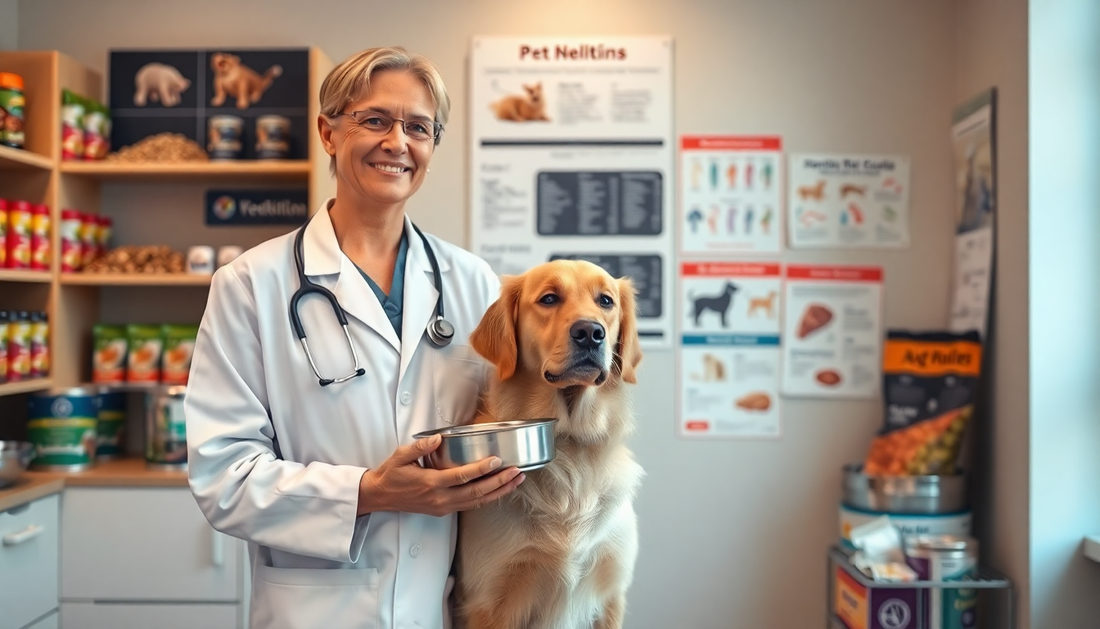
Are You Feeding Your Pet Right? A Vet's Guide to Healthy Pet Nutrition
Share
As a veterinarian, I've seen firsthand the impact that proper nutrition can have on a pet's overall health and well-being. Unfortunately, many pet owners struggle to navigate the complex world of pet food, often falling victim to common misconceptions and feeding mistakes. In this comprehensive guide, I'll share my expertise to help you ensure your furry friend is getting the nourishment they need to thrive.
Understanding Pet Food Labels
The first step to providing your pet with a healthy diet is to understand the information on their food labels. While the packaging may be visually appealing, it's crucial to look beyond the marketing claims and focus on the actual nutritional content.
When examining the label, pay close attention to the ingredient list. Look for high-quality, whole-food sources of protein, such as chicken, beef, or fish. Avoid products that list vague terms like "meat by-products" or use a lot of filler ingredients like corn, wheat, or soy. These can be harder for your pet to digest and may contribute to sensitivities or other health issues.
Additionally, check the guaranteed analysis to ensure the food meets your pet's specific nutritional requirements. This information will tell you the percentages of crude protein, fat, fiber, and moisture in the formula. Consult your veterinarian to determine the appropriate ranges for your pet's age, breed, and activity level.
Common Pet Feeding Mistakes
One of the most prevalent issues I see in my practice is overfeeding, which can lead to obesity and a host of related health problems. It's important to follow the feeding guidelines on the pet food packaging, adjusting portions as needed based on your individual pet's needs. Remember, treats should make up no more than 10% of your pet's daily caloric intake.
Another common mistake is offering the wrong type of treats. Many commercially available treats are high in fat, sugar, and empty calories, providing little to no nutritional value. Instead, opt for healthy, low-calorie options like small pieces of cooked chicken, carrot sticks, or freeze-dried meat or fish.
It's also crucial to pay attention to your pet's individual dietary requirements. Some dogs and cats may have sensitivities to certain ingredients, such as grains or dairy, which can cause gastrointestinal distress or other health issues. If you suspect your pet may have a sensitivity, work with your veterinarian to find a formula that meets their specific needs.
Specialized Nutrition Strategies
For pets with unique nutritional requirements, such as those with sensitive stomachs or other health conditions, a more specialized approach may be necessary. Grain-free diets, for example, can be beneficial for dogs and cats with digestive issues, as they often contain easier-to-digest protein sources and fewer potential allergens.
In some cases, your veterinarian may also recommend adding supplements to your pet's diet to address specific nutritional deficiencies or support overall health. These can include probiotics to aid digestion, omega-3 fatty acids for skin and coat health, or joint-supporting supplements for older pets.
Hydration and Dietary Transitions
Proper hydration is just as important as a balanced diet for your pet's well-being. Ensure your furry friend has access to clean, fresh water at all times, and consider adding moisture-rich foods like wet canned or fresh-cooked meals to their diet.
When it comes to transitioning your pet to a new food, it's crucial to do so gradually to avoid gastrointestinal upset. Over the course of 7-10 days, slowly introduce the new formula by mixing it with the old food, gradually increasing the ratio of the new to the old. This gentle approach will help your pet's digestive system adapt to the changes.
Training and Treat Management
Treats can be a valuable tool in pet training, but it's important to use them judiciously. Choose healthy, low-calorie options that complement your pet's regular diet, and be mindful of portion sizes. Remember, treats should make up no more than 10% of your pet's daily caloric intake.
When training your pet, be sure to reward good behavior with a combination of praise, playtime, and the occasional healthy treat. This will help reinforce positive habits while ensuring your furry friend stays on track with their overall nutrition.
Conclusion
Providing your pet with proper nutrition is one of the most important responsibilities of pet ownership. By understanding pet food labels, avoiding common feeding mistakes, and implementing specialized strategies when necessary, you can ensure your furry friend is getting the nourishment they need to live a long, healthy, and happy life.
Remember, your veterinarian is your greatest ally in this journey. Don't hesitate to consult them for personalized advice and guidance on your pet's dietary needs. With the right approach, you can give your beloved companion the gift of optimal health and well-being.
